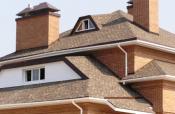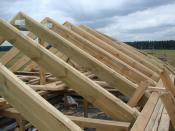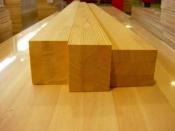Search
Login
Recommended
Lawn care: aeration and its rules
Competent lawn care is not only regular watering, mowing and periodic fertilizing. An important role in maintaining the freshness, splendor and bright green color of the grass will be played by events such as aeration of the lawn.
Over time, a layer of moss, grass felt, dust, and grass roots accumulate on the surface of the lawn, which prevents sufficient penetration of air, nutrients, and water into the soil. Aeration of the lawn contributes to the destruction of the formed harmful layer and ensures the natural saturation of the soil with atmospheric oxygen.
Content
- Year-round lawn care video
- The need for aeration of the lawn video
- Organization of natural aeration of the lawn
- Do-it-yourself aerator
Lawn Care Basics
Juicy, well-groomed grass greens an excellent background for any landscaping. However, a high decorative result can be obtained if the lawn is properly maintained throughout the year. Consider what work needs to be done at different times of the year to maintain the green carpet in excellent condition.

IN spring period the lawn needs special attention. Competent care the lawn in the spring will provide good grass growth for the entire coming season.
Mandatory spring events include:
- Combing the turf, removing accumulated debris, leaves is carried out immediately after the snow melts (after the soil dries on the surface). Using a rake, the lawn is combed out in two different directions.
- The first aeration of the lawn is carried out precisely in the spring to saturate the topsoil with oxygen. This procedure will give greater access to moisture, fertilizers to the root system of the grass.
- Top dressing of a lawn with nitrogen-containing mineral fertilizers stimulating intensive growth and tillering of grass.

- Treatment of lawn grass by spraying with systemic fungicides can prevent or remove the appearance of fungal diseases (fusarium, various types of mold, powdery mildew).
- Alignment of a lawn surface. If there are glades, loose grass or yellow spots on the site, you need to remove part of the damaged lawn, loosen the ground, make fertilizers and sow the grass.
- Mowing the lawn in spring is carried out when the grass has grown by at least 10 cm. The grass is cut to 5-6 cm, and during the second mowing 3-4 cm. The frequency of subsequent haircuts is twice a month.

Summer care behind the lawn is a timely mowing and regular watering (3-4 times a week). Once a summer, you can make fertilizing (complex nitrogen-containing or organic fertilizers), which will restore the supply of nutrients in plants.
Comprehensive lawn care in the fall includes a number of events:
- Lawn repair in autumn is similar to spring leveling of the lawn surface. After a hot summer, thinned or burned out areas may appear, which must be removed and new grass sown in their place.
- Topping the lawn with phosphorus-potassium fertilizers for the winter will increase the grass's resistance to negative atmospheric phenomena and strengthen its root system. Fertilizers that are applied in the fall should not contain nitrogen, so as not to provoke the growth of young shoots unstable to frost.
- Aeration of the lawn in the fall prevent the soaking of the lawn, due to the fact that during prolonged rains, water can more easily penetrate the soil without accumulating on the surface.
- The final mowing of the lawn is carried out at the end of October to a grass height of 5-7 cm.

Lawn Care in winter is to comply with elementary rules:
- if the snow layer on the lawn is less than 20 cm, then you can’t walk on it;
- it is forbidden to unload snow from cleared paths onto the lawn;
- it is strictly forbidden to fill the rink on the lawn.
If an ice crust forms on the lawn after a thaw in winter, then it must be carefully broken by a rake, otherwise the plants will lack oxygen.
The need for aeration of the lawn
Aeration is an event aimed at improving the gas exchange of atmospheric air with soil, that is, a kind of ventilation of the soil of the lawn. Enrichment of the soil with oxygen plays an important role in the development and growth of plants.

Sod from last year's grass may form on the surface of the soil of the lawn, and sometimes, the earth simply coalesces, blocking air access to the root system of plants. Over time, this leads to the accumulation of carbon dioxide in the soil, a slowdown in grass growth, the appearance of bald spots, moss, dead wood and a decrease in plant resistance to moisture and cold.
In rainy weather, aeration helps to dry excess moisture and prevent root decay, and in case of drought, aeration in time will increase the efficiency of irrigation. Therefore, in the lawn periodically it is necessary to make holes (punctures) with garden tools or special tools with aerators.
Organization of natural aeration of the lawn
Dates of airing the lawn
The best option is aeration twice a year. However, it is necessary to take into account the load on the lawn, the type of planted grass and climatic conditions.
Determining the timing of aeration and its quantity per season should be based on the following rules:
- on a lawn with a high load (strong trampling on sports lawns), aeration should be carried out 2-3 times a year;
- in adverse weather conditions (prolonged rains or severe drought), additional aeration may be required;
- on sandy soils, one aeration per season is sufficient, and on clay soils two or three aeration of the lawn;
- on trampled areas of the lawn, in places where the grass turned yellow or moss formed, it is necessary to organize aeration;
- grasses of the late cool seasons (fescue, bluegrass) must be aired with the onset of autumn, heat-loving herbs (Bermuda grass) in late spring.
The need for aeration can be determined in this way:

Cut a small piece of lawn and look at the roots of the grass. If the roots are small (up to 5 cm), it means that a sufficient amount of oxygen does not enter the soil and aeration should be carried out soon
Aeration methods and lawn care tools
There are two ways to ventilate the lawn:
- Tingling of the soil with metal pins (solid) to form holes in the soil without displacing the soil layer.

- The use of hollow-tooth aerators. With this method of aeration, soil is extracted with a diameter of 1-2 cm, and its subsequent scattering on the lawn.

Experts argue that it is more efficient to use core aerators, which during work do not compact the soil too much and better remove the layer from dry straw.
To carry out aeration work, various devices and tools are used, which can conditionally be divided into two groups:
- Tools powered by human strength (suitable for aeration of small areas).
- Electric aeration machines for deep aeration.

The first group includes fan rake, pitchfork. With the help of pitchfork, it is possible to make punctures in the ground to a depth of about 10 cm, this will be enough to normalize air exchange. However, such work takes too much time, so the pitchfork is applicable only on small lawns.

A rake made of steel thin rods in the shape of a sickle will also do their job well. They slightly cut the soil horizontally, combing out the accumulated remains of dead grass.

Some gardeners prefer to use original soles-aerators for airing the soil, in which it is enough to simply walk on the grass, and the teeth mounted in the shoes themselves will do their job.
Mechanical aerators include a device resembling a rake with rotating teeth or a two-wheeled device with long spikes (hollow or solid). When working with such tools, loosening of the soil occurs simultaneously.
In large areas, it is necessary to use self-propelled deep aeration machines with high performance, equipped with an electric or gasoline engine.
Motor installations often combine the functions of an electric rake (collect moss, dead grass) and the function of an aerator (piercing the soil to a set depth).
Aerators with a gasoline engine are mobile, have great power and can handle large areas of lawns, but are quite noisy during operation and sensitive to the quality of gasoline and oil used. Mains aerators are easier to maintain, less noisy, but have a limited radius (cord length) of use. Motor aerators are more often used in sports fields or in landscape gardens.

There are blocks with a small working width, used as a trailer for a self-propelled lawn mower. Such rear-mounted compact units have high performance and show good results, both in large areas and in small ones.
Rules for competent aeration
Aeration of the lawn is necessary, adhering to the following rules:
- One day before the aeration, the lawn should be watered to slightly soften the ground. You can ventilate the ground the day after a light rain, the soil should not be jelly-like.
- Each strip drawn by the aerator should overlap 3-4 cm from the previous one.

- If the soil of the lawn is too compact, then you need to re-aerate. In this case, the aerator should move in the perpendicular direction with the previous procedure.
- Immediately after aeration, it is advisable to fertilize the lawn, and in places where the lawn has begun to thin out, weed grass.
- After drying of the earth (usually a couple of days after aeration), the soil must be leveled with a rake.
It is strongly not recommended to aerate the lawn in hot weather; there is a risk of completely destroying the plants
Do-it-yourself aerator
To care for a small lawn area in the country or in the garden, it is not necessary to buy ready-made equipment, because you can independently make a very effective tool for airing the soil.
To create sandals-aerators, it is necessary to prepare:
- wooden or plastic plates (width about 5 cm, length in foot size);
- self-tapping screws;
- rope or harnesses from old bags, backpacks.

Drill holes in the plates in a checkerboard pattern and screw the screws into them with a screwdriver. You can attach the aerator platforms to the shoes using an ordinary rope or old harnesses.
A more complex, but convenient design can be made of a metal pipe:
- Fill the pipe section with weighting material so that the pins penetrate deep into the soil.
- From the outside of the pipe, weld nails in a checkerboard pattern.
- The pipe must be installed on a shaft with bearings to ensure easy rotation of the drum with pins during operation.
- Attach a bracket to the shaft, on which it will be possible to install a handle for controlling a makeshift aerator.
You can go further and equip the aerator with additional wheels, which will significantly speed up the work.

As you can see, the organization of lawn aeration is not a complicated process, but it is very important, improving the decorative functions of the green lawn and ensuring its long-term use.





